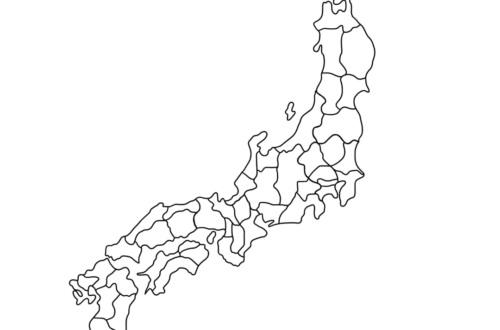
Japan is an island nation made up of thousands of islands in East Asia, and is the fourth largest island country in the world. Previously thought to consist of 6,852 islands from the 1987 Japan Coast Guard report, a recount in 2023 using digital technologies found that the Japan archipelago has over 14,000 islands. Stretching over 3,000 kilometers (1,864 miles) from north to south, these islands form a unique country that is diverse in climate and culture.
Although Japan is comprised of thousands of islands, only a few hundred are inhabited. Even then, the majority of the population is concentrated on the few larger islands that make up approximately 97% of the country’s land area. These main islands are Hokkaido, Honshu, Shikoku, Kyushu, and Okinawa (which is sometimes excluded from the “main islands” depending on the source).
- Hokkaido: The northernmost of the main islands, Hokkaido is known for its winter sports and natural beauty.
- Honshu: The largest and most populous island, Honshu is often referred to as Japan’s mainland and is home to major cities such as Tokyo and Kyoto.
- Shikoku: The smallest of the four main islands, Shikoku is known for its beautiful landscapes and pilgrimage routes.
- Kyushu: Located in the southwest of Japan, Kyushu has a warmer climate and is famous for its hot springs and active volcanoes.
Okinawa: Oftentimes not considered part of the main islands, Okinawa and the surrounding Ryukyu Islands in the south of Japan are also significant. Having once been an independent kingdom, they have a distinct culture and history.
Japan’s geography as an island nation has played an important role in shaping its culture, history, and economy. Surrounded by the Sea of Japan (a.k.a. the East Sea) to the west and the Pacific Ocean to the east, Japan has developed a rich maritime tradition over its history. It has also greatly influenced its seafood-heavy cuisine and its historical periods of isolation that shaped its unique culture.
The wide spread of Japan’s islands contributes to the country’s varied climates, from the snowy cold winters of Hokkaido to the subtropical beaches in Okinawa. This geographical spread has resulted in rich biodiversity and distinct regional cultures throughout the country.
Today, modern transportation such as high-speed rail and airports connect these islands, making travel between them accessible and efficient.
Understanding Japan’s island nature provides valuable insights into its character and the challenges and opportunities it used to, and currently, faces. From cuisine and relationships with other countries to natural disaster preparedness and the development of renewable energy sources, Japan’s identity as an island nation continues to shape its present and future.



